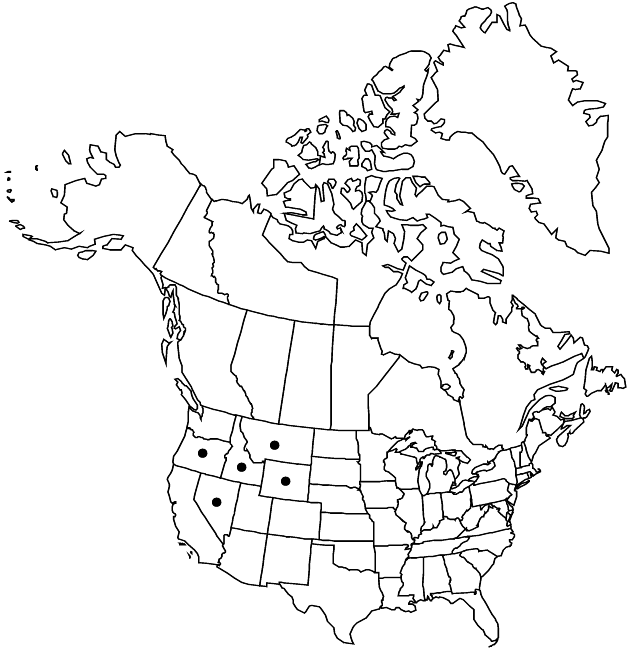Wyethia helianthoides
J. Acad. Nat. Sci. Philadelphia 7: 40, plate 5. 1834.
Plants 25–40 (–80) cm. Basal leaves: blades (light green) lance-elliptic to elliptic-ovate, (10–) 20–30+ cm, margins usually entire, sometimes denticulate, ± ciliolate, faces sparsely pilose to pilosulous (usually minutely glanddotted or stipitate-glandular as well); cauline leaves similar, smaller distally (petiolate or sessile). Heads borne singly. Involucres ± hemispheric, (12–) 20–30 (–40) mm diam. Phyllaries 36–48, subequal, herbaceous, margins villous-ciliate, faces glabrous or glabrate; outer 18–25 mm (not surpassing discs). Ray-florets 13–25; laminae (cream to white) 25–45 mm. Cypselae 9–11 mm, strigillose distally and on margins.
Phenology: Flowering May–Jul.
Habitat: Meadows, other damp to wet sites, openings in pine forests
Elevation: 40–2600 m
Distribution

Idaho, Mont., Nev., Oreg., Wyo.
Discussion
Hybrids between Wyethia helianthoides and W. amplexicaulis are infrequent where the species are in contact; no introgression has been noted. The hybrids have been called Wyethia ×cusickii Piper; they usually bloom later than W. helianthoides and earlier than W. amplexicaulis.
Selected References
None.
Lower Taxa
"broader" is not a number.